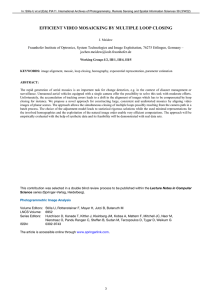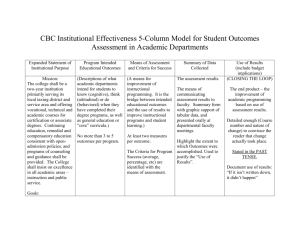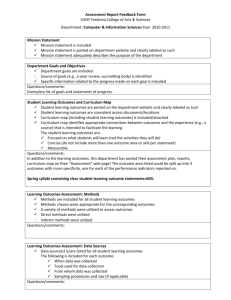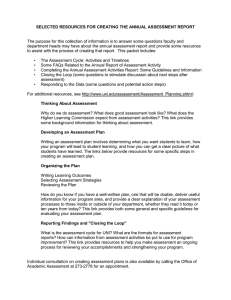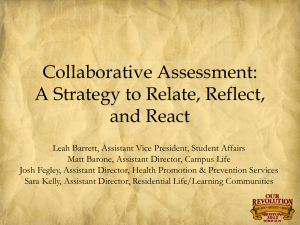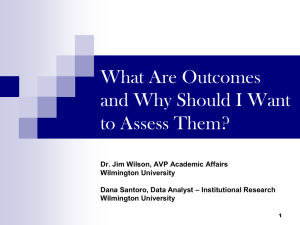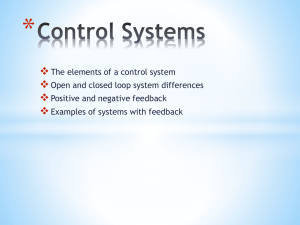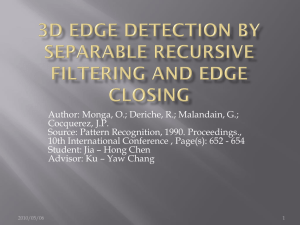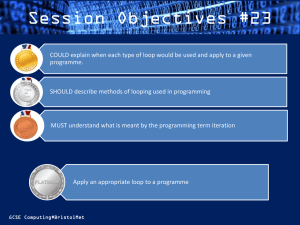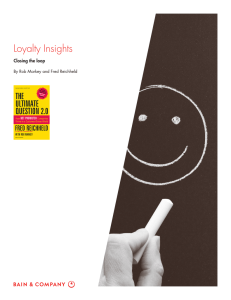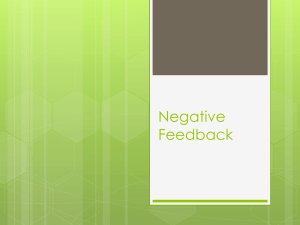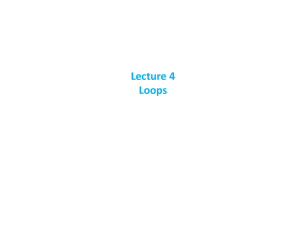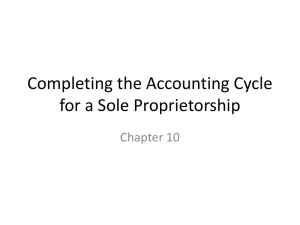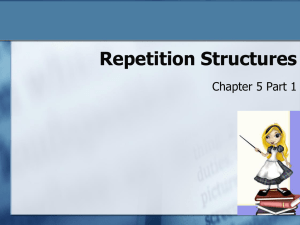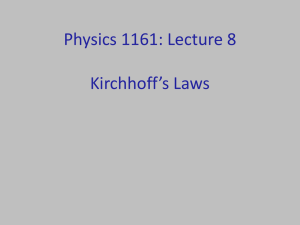Closing the Loop in Assessment - University of Nevada, Las Vegas
advertisement
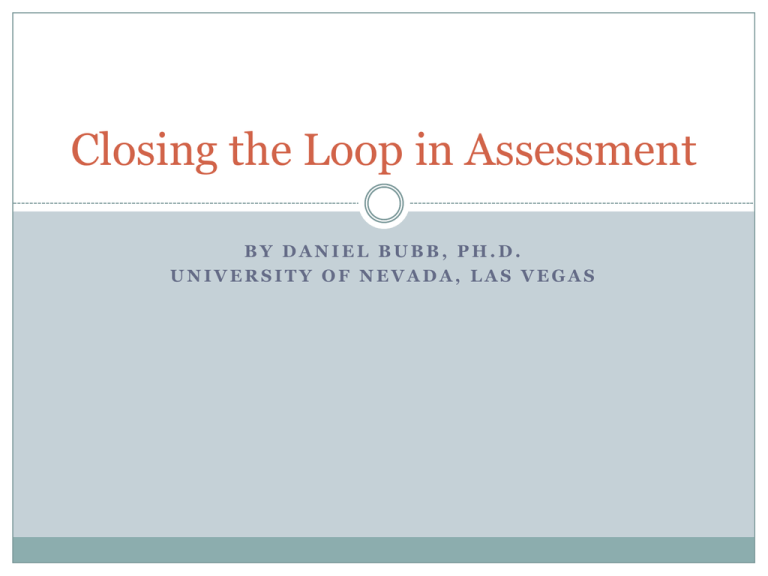
Closing the Loop in Assessment BY DANIEL BUBB, PH.D. UNIVERSITY OF NEVADA, LAS VEGAS What does it mean? “Closing the Loop” is the third component of the assessment cycle 1.) Establishing a set of learning objectives 2.) Designing instruments to measure learning outcomes 3.) Closing the loop – how departments respond to learning outcomes results. This can range from adjusting a quiz question to major curricular changes “Closing the loop” is not a kneejerk reaction to student learning outcomes results, but is part of a larger, faculty-centered, fluid process of continuous assessment improvement • Example: Department of History’s 2011 annual report - Created an environment of shared community - Created workshops designed to help students improve their research paper writing skills - A possible additional way to “close the loop” is to give a writing assignment with an embedded question to students to gage their comprehension of the material, and simultaneously measure their critical thinking skills (a core competency) • A Second Example: Department of English’s 2011 annual report • Made course and curricular changes based on survey results • Considered other methods of assessment including portfolios and a capstone project • Might consider designing a rubric, especially for upper- division courses, including a capstone course, which will provide considerable information about student learning • “Closing the loop” should reflect course or programmatic changes and the Department’s Mission Statement • Do the results and departmental response reflect what the Department is attempting to achieve with its students? • Make gradual, incremental changes to a course or program. • • Easier to do Better assessment program Challenges to Closing the Loop Different student aptitudes Meeting students’ needs Budget cuts Possible Solutions Strong set of Core Competencies The University, in its Year One Peer-Evaluation Report has identified a set of University Undergraduate Learning Outcomes (UULOs) Provide peer feedback from faculty who have assessed the learning outcomes Asking department Chairs to make “closing the loop” an agenda item for discussion in department meetings For libraries, respond to outcomes results from the information literacies In closing: Many ways to do meaningful assessment, but all must “close the loop” in some way Changes in “closing the loop” would be gradual so they are more manageable and measurable Faculty assessment work must be supported through professional development by the university administration Sources in addition to those listed on the UNLV Assessment Website National Institute for Learning Outcomes Assessment (NILOA) http://openedpractices.org/resources http://www.winona.edu/AIR/rubrics.htm

